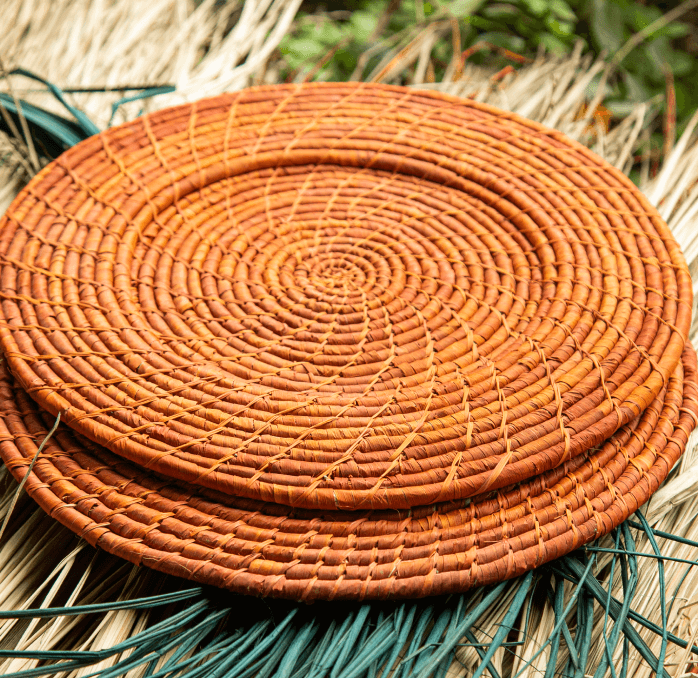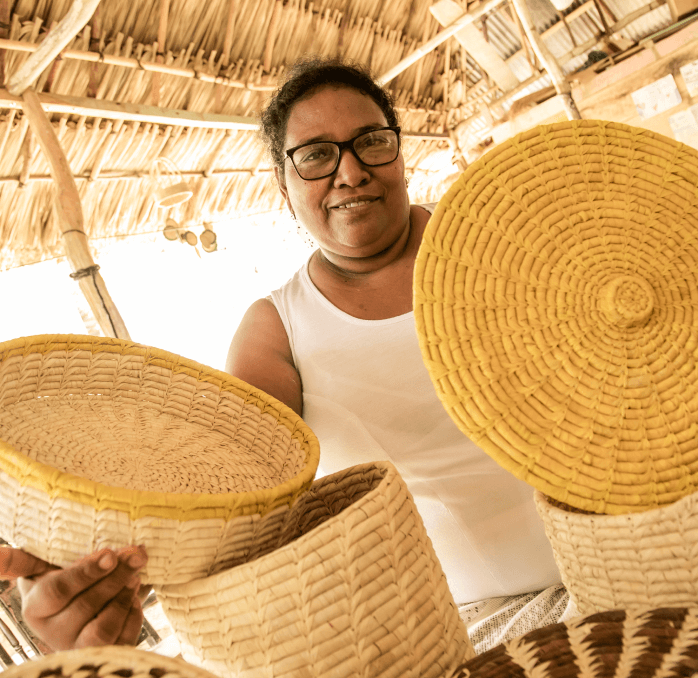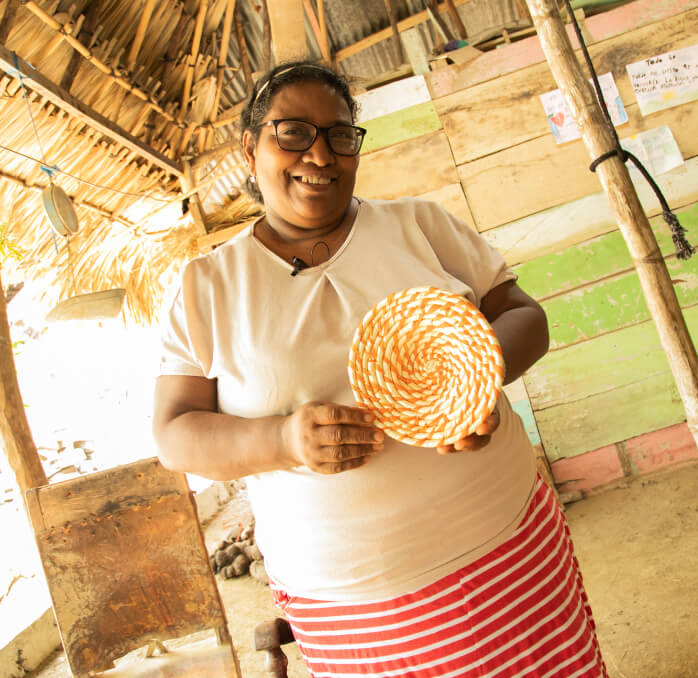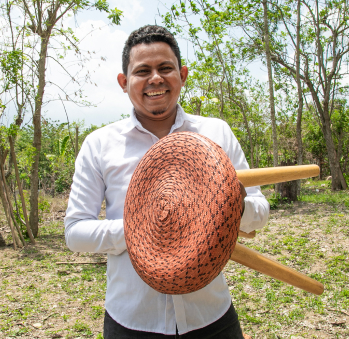Martha Borja
Workshop: Grupo De Artesanos Martha Borja
Craft: Cesteria
Trail: Sucre Route
Location: Colosó, Sucre
SCHEDULE YOUR VISIT
Barrio las flores, Colosó, Sucre
3116570482
marthaborjapadilla@gmail.com
@martha.borja.948
The iraca palm thrives in the wild along the steep edges of brooks and rivers. After Martha Borja and her community of artisans obtain its shoots, their work begins: they wash, rip open, boil, wash again, and sun-dry it until it turns beige. Following this, they separate the fiber from its core and start rolling up the coils that will be used, which gives its name to the technique they employ: basketry in iraca coils. However, natural dyes do not adhere to this palm. Despite attempting to dye it using local plants like bija, achiote, and turmeric, none of these methods proved effective due to the wax that covers the leaves, causing the dye to slide off. Thus, to add colorful designs into these baskets, distinct from Colosó, they resort to using anilines.
Legend recounts that the first woman to weave iraca using coils was Carmen Carrascal. Her children lacked bags to carry their notebooks, so she assembled baskets made from iraca. The local community was astounded by her creations. One of her daughters who benefited from Carmen’s innovation, Amparo Carrascal, is now the manager of this group of weavers.
Martha Borja and the 25 individuals she collaborates with craft baskets, bags, and mats using iraca. They sew the coils using a curved needle, rope, and the strength of their hands to tighten and shape their products without employing any wires. Despite the group being named after Martha, decisions regarding designs and prices are made collectively each time an order is placed. After gathering and finalizing the details, they proceed to work. While client orders may present challenges, they have always met their requirements. Those with more advanced knowledge assist those who are still learning, and at the end of the production line stands Martha with her scissors, rectifying any faulty weaves. She ensures the overall product quality and assists everyone in producing uniform pieces.
For Martha, it all began at the age of 17 when she watched her sister, Ana María Borja, working with iraca. It drew her attention because, as she says “I am in love with every art form”. She purchased a basket from her sister, which she unraveled and sewed repeatedly to practice the technique. Then, with guidance from Ana María and other skilled weavers, she honed her expertise. In her workshop, Martha spends her time experimenting with new designs, products, and material blends such as totumo, wood, or fabric for crafting bags. Her skills extend to dressmaking, fabric painting, and macramé—she’s up to everything!
Together, they have found how to portray their surroundings in their baskets: the arizá flower, bellflowers, violets, and the village houses. These houses were predominantly white and brown for many years, but as the village grows more colorful, so do their baskets. According to Martha, the journey has been long. Previously, when they walked out of their houses and into their gardens, they struggled to find inspiration. Yet, after training, they learned how to draw from nature and their surroundings. Their crafts now depict the Montes de María, a facet of their landscape, as well as local animals like the icotea turtle, snakes, woodpeckers, and the fruits they cultivate in their gardens—papaya, soursop, watermelon, and lemon.
Craft












Artisans along the way
Artisans along the way
No puede copiar contenido de esta página



























































